<< Previous | Displaying results 3151-3200 of 6769 for "" | Next >>
Sara Neumann carries her luggage labled with an address in New York as she leaves the Deggendorf displaced persons camp. Deggendorf, Germany, 1945–47.
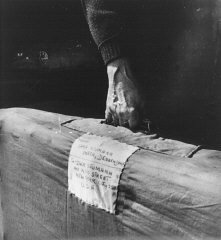
A Jewish New Year greeting card from Hela Brett, the donor's friend. In the winter of 1945-46, Rochelle Shulman (born Rochelle Szklarski), her father, and sisters left Poland with the help of the Brihah. They reached the Bad Reichenhall displaced persons camp and stayed there until February 1949, when they sailed to New York aboard the SS Marine Shark. Bad Reichenhall, Germany, September 1947.
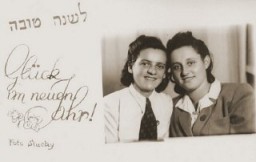
A pair of shoes left behind after a deportation action in the Kovno ghetto. Photographer George Kadish captioned the photo "The body is gone." Kovno, Lithuania, circa 1943.
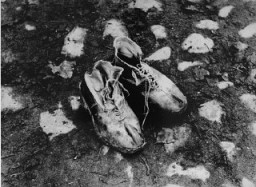
A young boy holding his younger brother in the Kovno ghetto. Older children frequently cared for younger siblings in the ghetto. Photographed by George Kadish. Kovno, Lithuania, 1941.
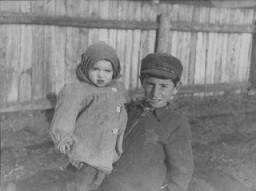
Soviet officers preside over the opening and exhumation of a mass grave at the Ninth Fort. Photographed by George Kadish. Kovno, Lithuania, 1944.
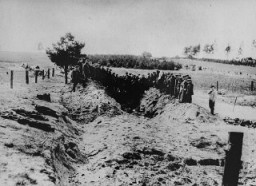
Secretary of the Kovno ghetto Jewish council Avraham Tory stands with Zvi Brik (left), workshop administrator, in the cemetery of the Kovno ghetto. Kovno, Lithuania, 1943.
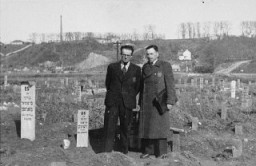
Prewar studio portrait in Sighet of Jewish siblings Suri and Ari Deutsch, both of whom died in the Holocaust. This photograph comes from the album of their cousin, Rosalia Dratler Roiter. Rosalia was deported to and died at Auschwitz. Sighet, Romania, 1937.
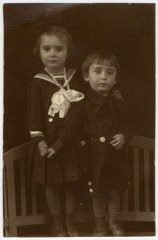
A group of young boys pose on and next to the demolished vehicle of local Jewish teacher Ferdinand Stern. The car had been driven to a nearby lake and set on fire during Kristallnacht. Frankenberg, Germany, November 1938.
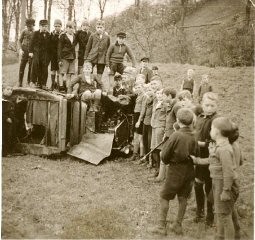
A Lithuanian auxiliary policeman auctions off property owned by persons killed in SS-managed shooting operations. Lithuanian auxiliaries served as shooters and guards in these operations. Were those who bought the clothing, who likely knew some of the victims in this small town, complicit in the crimes? Utena, Lithuania, July–August 1941.
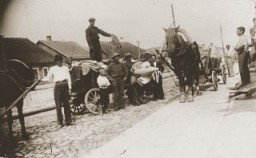
Hungarian Zionist leaders Otto Komoly and Rezso Kasztner (left), who negotiated with the SS for the release of Jews from Hungary. Budapest, Hungary, 1944.
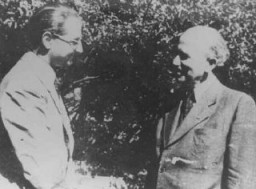
Jews from the "Kasztner train" arrive in Switzerland. This group of Jews was released from Bergen-Belsen as a result of negotiations between the Germans and Hungarian Jewish leaders Joel Brand and Rezso Kasztner. Switzerland, August 1944.
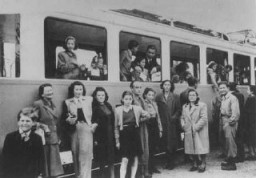
George Mandel-Mantello greets the Satmar Rebbe, Joel Teitelbaum, upon his arrival in Switzerland on the Kasztner transport from Bergen-Belsen. Switzerland, December 1944.
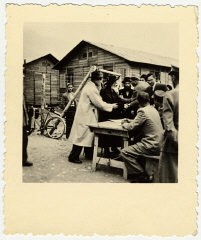
Commemorative postcard with a drawing of barrack 11 of Bergen-Belsen and marking the time the people on the Kasztner train spent in the camp. The Jews from the Kasztner transport lived in two barracks, 10 and 11, inside Bergen-Belsen. (This was probably drawn by the Hungarian artist Robert (Imre) Irsay who himself was on the Kasztner transport.)
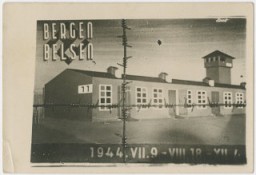
Aluminum food container lid used by a Hungarian Jewish family on the Kasztner train. The family had used the container on outings outside Budapest. It later accompanied them to Bergen-Belsen, Switzerland and, finally, to the United States.
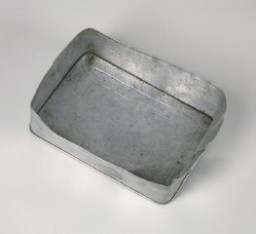
Soviet leader Joseph Stalin (left), US president Franklin D. Roosevelt (center), and British prime minister Winston S. Churchill (right) at the Tehran Conference. Tehran, Iran, between November 28 and December 1, 1943.
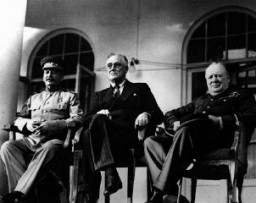
German Jewish adults and children wearing compulsory Jewish badges are lined up against a building. Weser, Germany, 1941–43.

Elsa Eisner, marked with a Jewish badge, walks down a street in Prague. She, her mother, twin sister and other members of the family were deported to Auschwitz in July 1942. Prague, Czechoslovakia, ca. 1941.
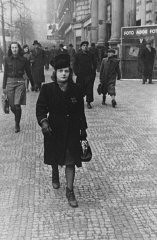
Portrait of an elderly Jewish woman wearing a Jewish badge in the Olkusz ghetto. Olkusz , Poland, 1941.
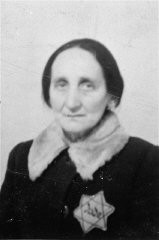
Jewish children wearing the compulsory yellow badge. In September 1943, they were deported to Auschwitz.Antwerp, Belgium, 1943.
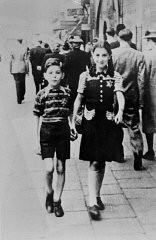
The Margules children wearing Jewish badges. Originally from Warsaw, the Margules family settled in Paris in the 1930s. Three of the children were deported and killed in 1942. Only one daughter (pictured at the bottom right) survived the war. Paris, France, 1941.
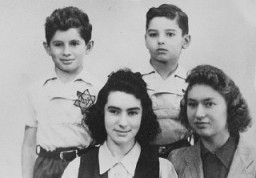
In the Jewish quarter of Paris, a Jewish woman wearing the compulsory Jewish badge stands at the entrance to a kosher butcher shop. France, between May 1942 and 1944.
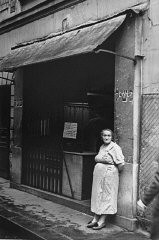
Portrait of the Weidenfeld family wearing Jewish badges in the Czernowitz (Cernauti) ghetto shortly before their deportation to Transnistria. Pictured from left to right are Yetty, Meshulem-Ber, Sallie, and Simche Weidenfeld. Cernauti, Romania, October 1941.
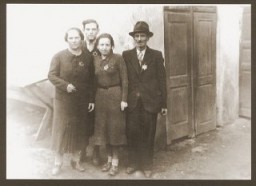
An elderly Jewish woman wears the compulsory yellow badge in the Riga ghetto. Latvia, between 1941 and 1944.
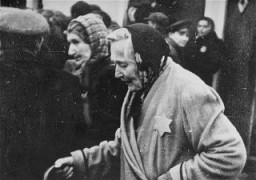
President Franklin D. Roosevelt sits with Eleanor Roosevelt in his study in the White House. FDR was elected the 32nd president of the United States in the presidential elections of November 1932. Washington, DC, 1933.
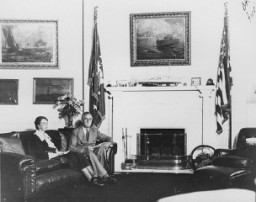
These Jewish children from the Children's Aid Society (OSE) home in Izieu were arrested and deported on the orders of Lyon Gestapo chief Klaus Barbie—the "Butcher of Lyon." France, 1944.
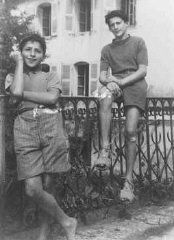
Lidice in smoke. The Nazis destroyed the Czech village in reprisal for the assassination by Czech resistance fighters of Reinhard Heydrich. Czechoslovakia, June 1942.

SS officers stand among the rubble of Lidice during the demolition of the town's ruins in reprisal for the assasination of Reinhard Heydrich. Czechoslovakia, between June 10 and June 30, 1942.
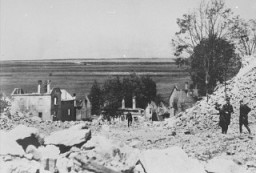
A Czech woman who witnessed the Nazi massacre of the male inhabitants of Lidice is sworn in at the RuSHA trial in Nuremberg, case #8 of the Subsequent Nuremberg Proceedings. Germany, October 30, 1947.
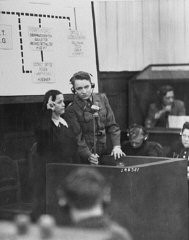
Fifteen-year-old Marie Doležalová testifies for the prosecution at the RuSHA Trial. She was one of the children kidnapped by the Germans after they destroyed the town of Lidice, Czechoslovakia, in June 1942. Nuremberg, Germany, October 30, 1947.
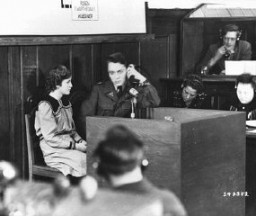
A Czech postage stamp issued in 1957, commemorating the fifteenth anniversary of the destruction of Lidice.
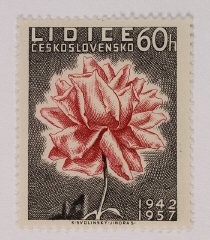
Beginning of the burning of the village of Um Zeifa in Darfur after the Janjaweed looted and attacked. Photograph taken by Brian Steidle, December 2004.
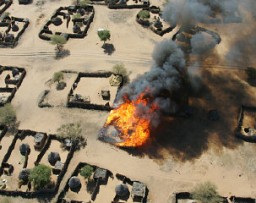
Close-up portrait of Hebrew and Yiddish author Itzhak Katzenelson in the Vittel internment camp. Because he possessed a Honduran passport, Katzenelson and his son were sent to the Vittel internment camp in France. They remained there for a year, during which time Katzenelson continued to write. In April 1944, however, both were deported to their death in Auschwitz. Vittel, France, 1943-1944.
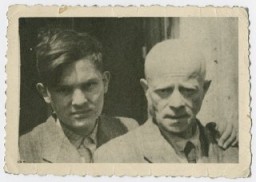
Close-up portrait of Miriam Wattenberg (Mary Berg). Because Mary's mother was American, she and her family were sent from the Warsaw ghetto to Vittel in to be held for possible prisoner exchange. Her diary became the first wartime published eyewitness account in English of life in the Warsaw ghetto and the deportation of its inhabitants to be murdered at Treblinka.
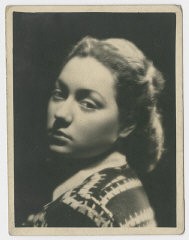
Advertising poster for the antisemitic film, Der ewige Jude (The Eternal Jew), directed by Fritz Hippler. Germany, ca. 1940.
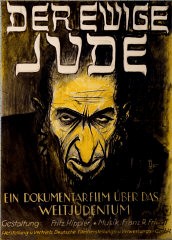
A poster advertising the antisemitic propaganda film "Der ewige Jude" (The Eternal Jew) hangs on the side of a Dutch building. Amsterdam, The Netherlands, 1942.
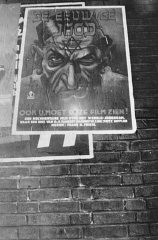
German citizens stand outside the decorated Hotel Dreesen, where Neville Chamberlain and Hitler held their second meeting on the Sudetenland and German demands for Czech territory. Nazi flags and the Union Jack fly from the building. Bad Godesberg, Germany, September 22, 1938.
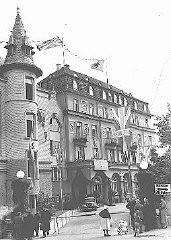
British prime minister Neville Chamberlain (left), German chancellor Adolf Hitler (center), and French premier Edouard Daladier (right) meet in Munich to determine the fate of Czechoslovakia. Germany, September 30, 1938.
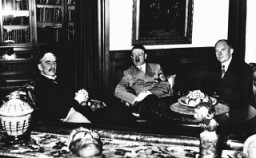
British Prime Minister Neville Chamberlain and German Chancellor Adolf Hitler greet each other at the Munich conference. Munich, Germany, September 29–30, 1938.
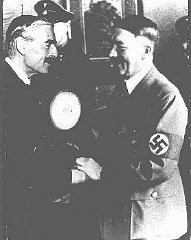
Gilbert and Eleanor Kraus (seated in the center, next to the ship's captain) pose with the 50 Austrian Jewish children they brought to the United States. Photograph taken in June 1939. All the children rescued by the Krauses were from families that had previously tried to escape Nazi territory. After the children arrived in the United States, they were sent to live with foster families until their parents were able to immigrate. However, many were never reunited with their families.
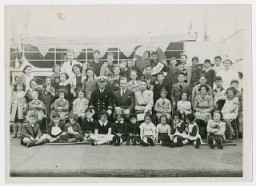
Austrian Jewish children being transported to the United States by Eleanor and Gilbert Kraus perform a life jacket drill aboard the ship President Harding. June 1939.
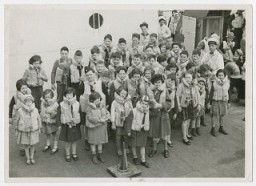
Children aboard the President Harding look at the Statue of Liberty as they pull into New York harbor. They were brought to the United States by Gilbert and Eleanor Kraus. New York, United States, June 1939.
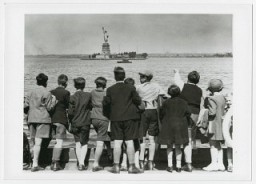
Smoke billows out from US ships hit during the Japanese air attack on Pearl Harbor, Hawaii, December 7, 1941.
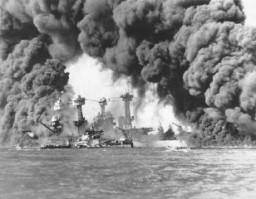
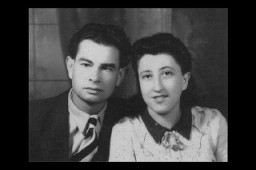
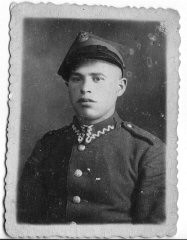

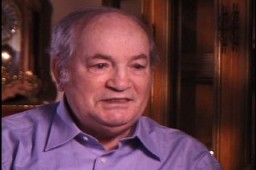
Bernard Druskin in Israel, 1946. Bernard joined the partisans after escaping from the Vilna ghetto in 1940.
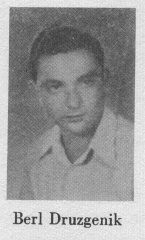

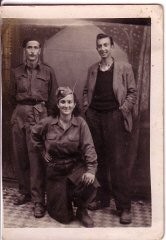
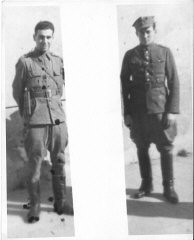
We would like to thank Crown Family Philanthropies, Abe and Ida Cooper Foundation, the Claims Conference, EVZ, and BMF for supporting the ongoing work to create content and resources for the Holocaust Encyclopedia. View the list of donor acknowledgement.